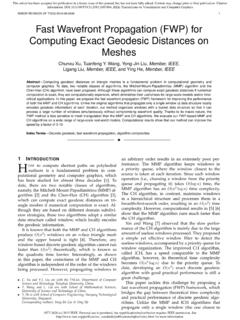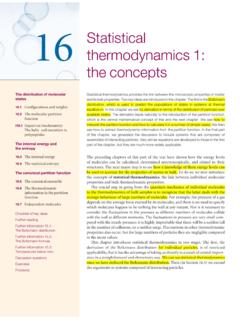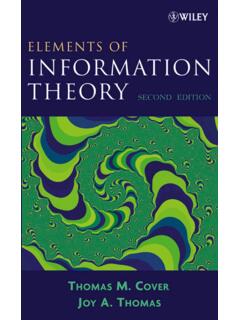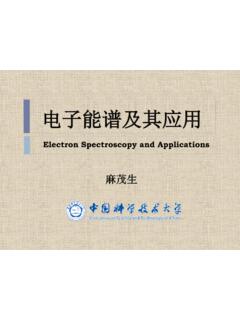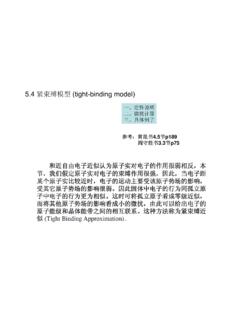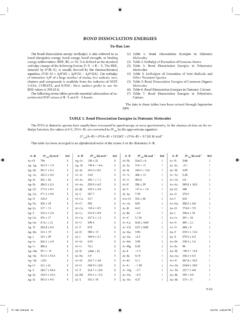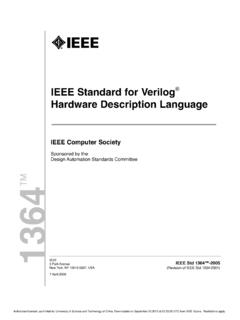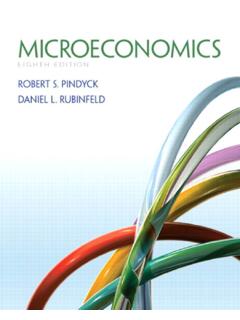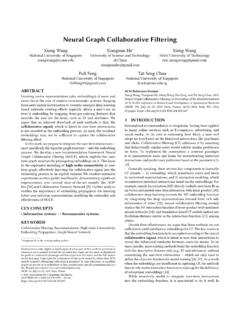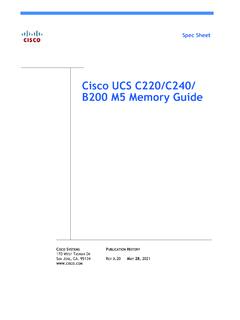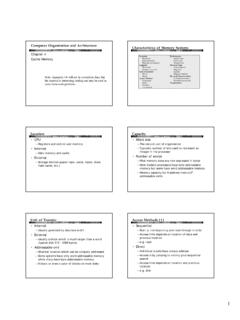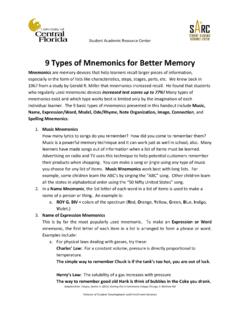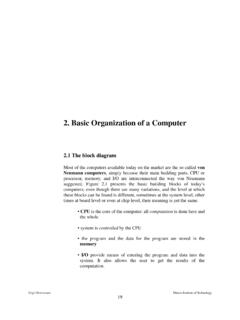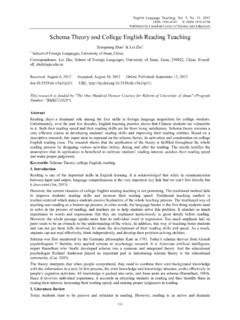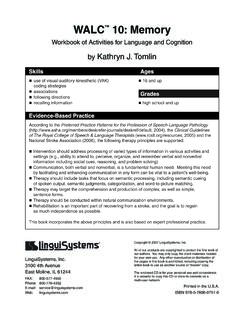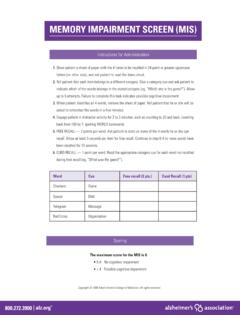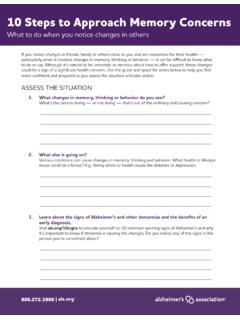Transcription of Computer Organization and Architecture 9th - USTC
1 Computer Organization AND ARCHITECTUREDESIGNING FOR PERFORMANCENINTH EDITIONW illiam StallingsBoston Columbus Indianapolis New York San Francisco Upper Saddle RiverAmsterdam Cape Town Dubai London Madrid Milan Munich Paris Montr al TorontoDelhi Mexico City S o Paulo Sydney Hong Kong Seoul Singapore Taipei TokyoCredits: Figure : reprinted with permission from The Computer Language Company, Inc. Figure : Buyya, Rajkumar, High-Performance Cluster Computing: Architectures and Systems, Vol I, 1st edition, 1999.
2 Reprinted and Electronically reproduced by permission of Pearson Education, Inc. Upper Saddle River, New Jersey, Figure : Reprinted with permission from Ethernet and acknowledgments borrowed from other sources and reproduced, with permission, in this textbook appear on the appropriate page within 2013, 2010, 2006 by Pearson Education, Inc., publishing as Prentice Hall. All rights reserved. Manufactured in the United States of America. This publication is protected by Copyright, and permission should be obtained from the publisher prior to any prohibited reproduction, storage in a retrieval system, or transmission in any form or by any means, electronic, mechanical, photocopying, recording, or likewise.
3 To obtain permission(s) to use material from this work, please submit a written request to Pearson Education, Inc., Permissions Department, One Lake Street, Upper Saddle River, New Jersey 07458, or you may fax your request to of the designations by manufacturers and sellers to distinguish their products are claimed as trademarks. Where those designations appear in this book, and the publisher was aware of a trademark claim, the designations have been printed in initial caps or all of Congress Cataloging-in-Publication Data available upon request10 9 8 7 6 5 4 3 2 1 ISBN 10: 0-13-293633-XISBN 13: 978-0-13-293633-0 Editorial Director: Marcia HortonExecutive Editor: Tracy DunkelbergerAssociate Editor: Carole SnyderDirector of Marketing: Patrice JonesMarketing Manager: Yez AlayanMarketing Coordinator: Kathryn FerrantiMarketing Assistant.
4 Emma SniderDirector of Production: Vince O BrienManaging Editor: Jeff HolcombProduction Project Manager: Kayla Smith-TarboxProduction Editor: Pat BrownManufacturing Buyer: Pat BrownCreative Director: Jayne ConteDesigner: Bruce KenselaarManager, Visual Research: Karen SanatarManager, Rights and Permissions: Mike JoyceText Permission Coordinator: Jen RoachCover Art: Charles Bowman/Robert HardingLead Media Project Manager: Daniel SandinFull-Service Project Management: Shiny Rajesh/ Integra Software Services Pvt. : Integra Software Services Pvt.
5 : Edward BrothersCover Printer: Lehigh-Phoenix Color/HagerstownText Font: Times Ten-RomanTo Tricia (ATS), my loving wife, the kindest and gentlest personThis page intentionally left blank vOnline Resources xiPreface xiiiAbout the Author xxiChapter 0 Reader s and Instructor s Guide 1 Outline of the Book 2 A Roadmap for Readers and Instructors 2 Why Study Computer Organization and Architecture ? 3 Internet and Web Resources 5 PART ONE OVERVIEW 6 Chapter 1 Introduction 6 Organization and Architecture 7 Structure and Function 8 Key Terms and Review Questions 14 Chapter 2 Computer Evolution and Performance 15 A Brief History of Computers 16 Designing for Performance 37 Multicore, MICs.
6 And GPGPUs 43 The Evolution of the Intel x86 Architecture 44 Embedded Systems and the ARM 45 Performance Assessment 49 Recommended Reading 59 Key Terms, Review Questions, and Problems 60 PART TWO THE Computer SYSTEM 65 Chapter 3 A Top-Level View of Computer Function and Interconnection 65 Computer Components 66 Computer Function 68 Interconnection Structures 84 Bus Interconnection 85 Point-To-Point Interconnect 93 PCI Express 98 Recommended Reading 108 Key Terms, Review Questions.
7 And Problems 108 Chapter 4 Cache memory 112 Computer memory System Overview 113 Cache memory Principles 120 Elements of Cache Design 123 CONTENTSvi CONTENTS Pentium 4 Cache Organization 141 ARM Cache Organization 144 Recommended Reading 146 Key Terms, Review Questions, and Problems 147 Appendix 4A Performance Characteristics of Two-Level Memories 152 Chapter 5 Internal memory 159 Semiconductor Main memory 160 Error Correction 170 Advanced DRAM Organization 174 Recommended Reading 180 Key Terms, Review Questions.
8 And Problems 181 Chapter 6 External memory 185 Magnetic Disk 186 RAID 195 Solid State Drives 205 Optical memory 210 Magnetic Tape 215 Recommended Reading 217 Key Terms, Review Questions, and Problems 218 Chapter 7 Input/Output 221 External Devices 223 I/O Modules 226 Programmed I/O 228 Interrupt-Driven I/O 232 Direct memory Access 240 I/O Channels and Processors 246 The External Interface: Thunderbolt and Infiniband 248 IBM zEnterprise 196 I/O Structure 256 Recommended Reading 260 Key Terms, Review Questions, and Problems 260 Chapter 8 Operating System Support 265 Operating System Overview 266 Scheduling 277 memory Management 283 Pentium memory Management 294 ARM memory Management 299 Recommended Reading 304 Key Terms, Review Questions.
9 And Problems 304 PART THREE ARITHMETIC AND LOGIC 309 Chapter 9 Number Systems 309 The Decimal System 310 Positional Number Systems 311 The Binary System 312 Converting Between Binary and Decimal 312 CONTENTS vii Hexadecimal Notation 315 Recommended Reading 317 Key Terms and Problems 317 Chapter 10 Computer Arithmetic 319 The Arithmetic and Logic Unit 320 Integer Representation 321 Integer Arithmetic 326 Floating-Point Representation 341 Floating-Point Arithmetic 349 Recommended Reading 358 Key Terms, Review Questions, and Problems 359 Chapter 11 Digital Logic 364 Boolean Algebra 365 Gates 368 Combinational Circuits 370 Sequential Circuits 388 Programmable Logic Devices 397 Recommended Reading 401 Key Terms and Problems 401 PART FOUR THE CENTRAL PROCESSING UNIT 405 Chapter 12 Instruction Sets.
10 Characteristics and Functions 405 Machine Instruction Characteristics 406 Types of Operands 413 Intel x86 and ARM Data Types 415 Types of Operations 418 Intel x86 and ARM Operation Types 431 Recommended Reading 441 Key Terms, Review Questions, and Problems 441 Appendix 12A Little-, Big-, and Bi-Endian 447 Chapter 13 Instruction Sets: Addressing Modes and Formats 451 Addressing Modes 452 x86 and ARM Addressing Modes 459 Instruction Formats 464 x86 and ARM Instruction Formats 473 Assembly Language 477 Recommended Reading 479 Key Terms, Review Questions.
